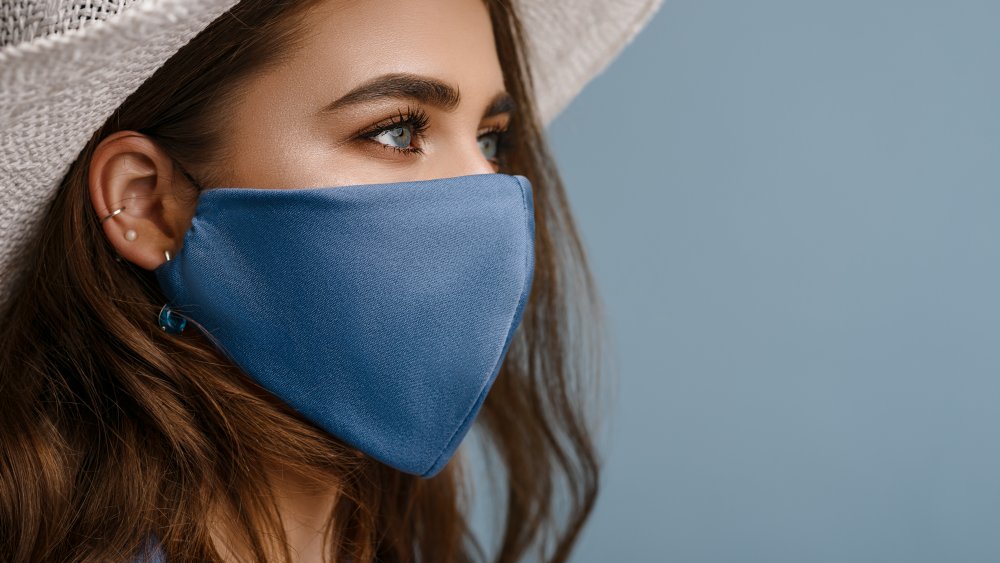The Real Reason Face Shields Might Not Protect Against COVID-19 Transmission
If you're tempted to trade in your cloth mask for a fancy one with a valve or even a face shield, you may want to reconsider: New research in the journal Physics of Fluids shows that small droplets can easily escape from around the sides of a face shield or pass unfiltered through an exhale valve, essentially offering subpar protection to those around you. In the visualization featured in the study, droplets can be seen disbursing three feet in front and on the sides, making the case to keep up with social distancing precautions in addition to wearing masks.
"Our observations suggest that to minimize the community spread of COVID-19, it may be preferable to use high quality cloth or surgical masks that are of a plain design, instead of face shields and masks equipped with exhale valves," wrote the researchers from Florida Atlantic University.
What not to wear when it comes to masks
The CDC recommends wearing masks in public and when around others who are not part of your household to prevent the spread of COVID-19 — and it specifically notes that masks with valves are not recommended for this purpose. But even plain masks vary in their effectiveness; in a recent study featured in Forbes, a fitted N95 mask without an exhalation valve had the best results followed by surgical and cotton/polypropylene masks featuring tightly woven material. Meanwhile, loosely knit, neck gaiter and bandana-style masks offered the least protection. In fact, wearing a neck gaiter mask was worse than not wearing a mask at all.
"We attribute this increase to the neck fleece dispersing larger droplets into several smaller droplets, therefore increasing the droplet count," observe the researchers from Duke University. So skip the gaiter and go for a surgical or cotton-based mask with a tight weave at your next gathering, and definitely ditch the face shield if that's all you're wearing — and encourage others to do the same.


